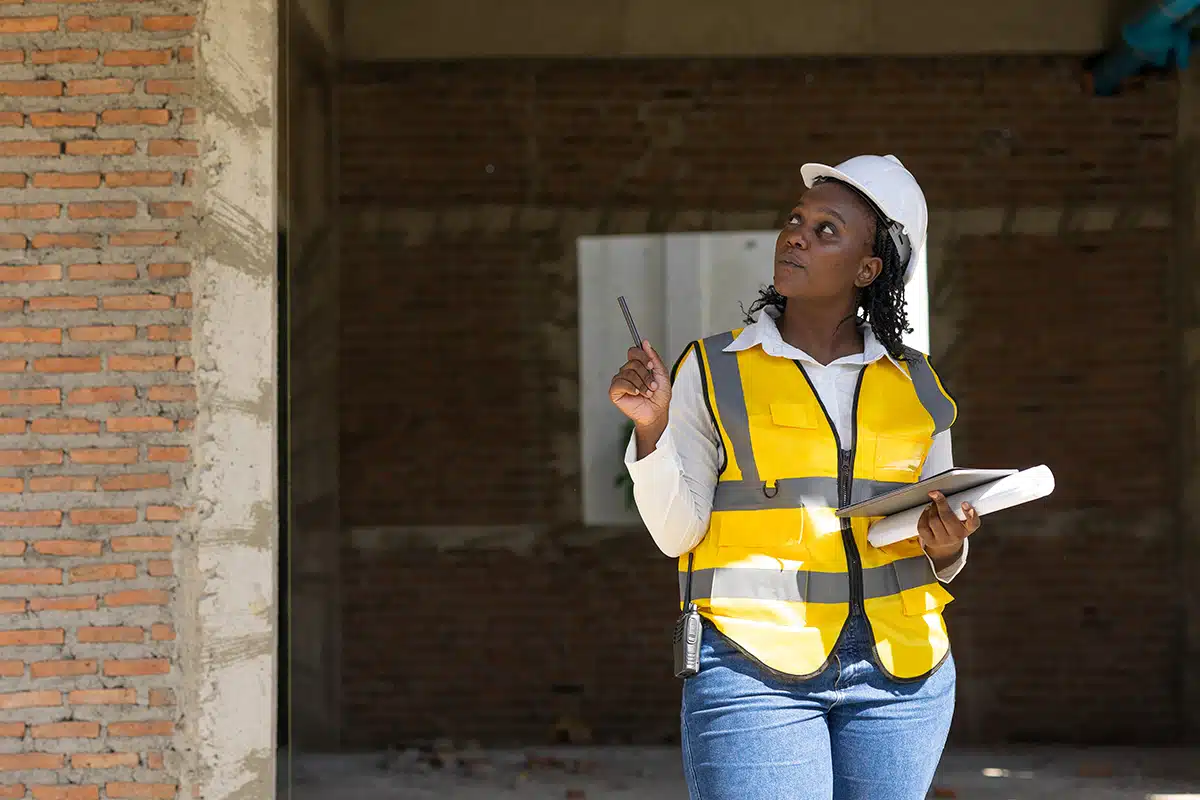Before operating on a patient, a surgeon maps out the procedure in detail. This kind of careful preparation ensures the best outcome possible. In much the same way, facilities managers seeking to make improvements, streamline operations, or cut costs will achieve the best results by first creating a plan. A surgeon’s plan is based on MRIs, blood draws, and other tests. For facilities managers, the best way to gather essential information is through a facility condition assessment.
What is a Facility Condition Assessment?
A facility condition assessment (FCA) is a thorough and critical evaluation of the physical condition of a building and its assets. This comprehensive evaluation requires a thorough inspection of the building’s infrastructure, systems, and finishes. The FCA’s purpose is to identify both existing and potential failures that might affect the building’s integrity and performance. A good assessment, however, goes beyond identifying problems, and includes recommendations for addressing existing issues, along with suggestions for future improvements.
No matter the industry, a facility condition assessment (FCA) is a vital tool in the development and support of an organization’s facilities master plan.
7 Reasons Why You Need a Facility Condition Assessment
Facilities managers, as well as building owners, can benefit from an FCA in multiple ways:
- It supplies the data needed to make informed decisions. (For example, with a comprehensive understanding of existing assets, executives can prioritize future improvements.)
- It predicts the useful life of assets, allowing strategic maintenance and capital planning.
- It supports compliance and safety efforts.
- It optimizes budgets by identifying urgent repairs.
- It saves money by identifying potential problems early, allowing for proactive versus reactive maintenance.
- It identifies opportunities for operational efficiency. (Example: Net Zero Buildings)
- It ensures capital projects are justified and properly funded.
How Do You Conduct an FCA?
Facilities management experts recommend conducting an FCA every five to 10 years. However, the frequency can vary. For a newer building in good condition, once a decade may be sufficient. Older buildings or those with heavy usage will need to be assessed more often, perhaps as frequently as every three years.
No matter the frequency, properly conducting an FCA requires meticulous planning and execution. There’s more than one way to conduct an FCA, but the most common approach is comprised of four steps:
1. Preparation and Planning
Your facility condition assessment will only be as good as your preparation for it. First, define the scope of your assessment, determine the buildings to be assessed, and identify your team. Your team should include professionals from multiple disciplines, such as architects, engineers, facility managers, and trade professionals. Depending on the size of your company, you may already have many of these professionals in house; however, if you don’t, there are firms specializing in professional property consultation that can provide assessment services.
2. Inspection
This is the hands-on phase. Your team will walk through each building to inspect the structure’s condition and its systems. Careful documentation is critical at this step—thorough and precise data is essential for creating an accurate FCA. During the inspection phase, be on the lookout for both current deficiencies and future opportunities for improvement. And be sure to take plenty of photographs for reference.
3. Data Analysis
Once you have your data, it’s time for an in-depth analysis. While you may be tempted to tackle all the deficiencies you discover at once, this is the time to take an intentional pause. Careful data analysis will help you prioritize your list of must-do improvements, so that the most severe issues can be addressed first. A thorough analysis will also enable you to determine the best schedule for ongoing maintenance. Rather than pre-emptively performing maintenance that may be unnecessary, you’ll be able to more accurately predict what needs to be done and when. This best practice, known as predictive maintenance, can lower maintenance costs by up to 25%, according to the Deloitte Analytics Institute.
4. Reporting
Before you can execute your plan, you need a comprehensive report. The report should include a detailed description of the condition of each facility as well as each building’s identified deficits and estimates for repair. The report should also outline opportunities for improvement and recommendations for next steps. Your report will serve as a valuable road map when you begin your repairs and improvements.
Finding the Right Tools
During each phase of creating your FCA, you may find asset management software to be a useful tool. This type of software, some of which incorporates AI, can help you easily organize and analyze the data you gather, and even propose which projects should be prioritized. For example, using such software, Frederick County, Maryland was able to improve its asset management practices. The county replaced spreadsheets and personal knowledge with a centralized data hub and a comprehensive asset inventory. These extensive data sets have not only made budget planning easier and more accurate, they’ve also made it possible for the county to become more proactive in its asset maintenance.
But what if your current employees lack the time or the expertise to conduct a facility condition assessment? In that case, the solution may be to hire a third-party facilities management services provider. While this approach will cost more than conducting the FCA in house, it can be far more cost-effective in the long run, if it prevents you from basing critical planning decisions on an incomplete, poor-quality FCA—or worse, no FCA at all.
What Should My FCA Include?
Buildings deteriorate over time, so a good place to start your facility condition assessment is with your building envelope: the structural elements such as the roof, walls, windows, and doors that help protect the building’s interior from the elements. Start by assessing the condition of the ceilings, walls, partitions, and floors, and be sure to check for overall cleanliness, proper lighting, and ventilation.
Once the building envelope has been assessed, you can move on to the building’s systems: mechanical, technology/communication, electrical, vertical transportation (escalators and elevators), etc. While this is the time to pay attention to details, don’t lose sight of the big picture. These systems are not static, so it’s important to think through how they perform in use. For example, when evaluating fire safety, go beyond inspecting fire alarms, extinguishers, and sprinkler systems, and ask questions like “Are the emergency exits easily accessible? Do they have adequate signage? Is there appropriate emergency lighting?”

This is also the time to make sure that all the facility’s systems comply with local and federal codes. Building codes and regulations change over time, so be sure to stay up to date on all applicable building standards and environmental regulations. What may have been compliant 20 years ago could easily be outdated now.
Additionally, as you conduct your FCA, remember that you’re not just looking for existing problems; you are also seeking to identify ways to eliminate or minimize potential future problems. For example, to protect your organization from unexpectedly high energy bills, look for ways to lower energy consumption by applying insulation strategically and improving the energy efficiency of lighting, HVAC assets, and even windows.
How to Use the FCA
How a facility condition assessment is used can vary from industry to industry. A facility manager for an educational institution may be concerned about the safety of a large stadium, while a healthcare facility manager may use an FCA to understand the condition of an operating theater or a specialized facility such as an imaging center. Yet, no matter the industry, a facility condition assessment is a vital tool in the development and support of an organization’s facilities master plan (FMP). An FCA supports the master plan in multiple ways.
- Prioritizing Assets: The data from an FCA ensures that the resources of your FMP are allocated to the most critical needs.
- Supporting the FMP Timeline: The information gained from an FCA is used to predict the future repair and replacement needs that are outlined in the FMP.
- Providing Cost Estimates: By providing estimates for upgrades, replacements, and repairs, your FCA supports your FMP in developing realistic budgets for capital improvements and maintenance.
- Aligning Strategic Goals: Conducting a thorough FCA lets you determine how well your facility’s assets are meeting their intended purposes, so you can align facility upgrades and replacements with the organizational goals of the FMP.
- Supporting an Organization’s Sustainability Goals: By assessing energy usage and other environmental factors, an FCA provides insights that can be incorporated into the sustainability goals outlined in your FMP.
- Providing Risk Mitigation: Code compliance and other safety hazards are outlined in an FCA, enabling planners to strategically and proactively address these risks in the FMP.

Worth the Effort
A facility condition assessment can be time-consuming, but its benefits make it worth the effort. As the foundation of your facilities master plan, it’s a strategic tool that allows you to make data-driven decisions, prioritize resources, align your facility improvements with your organizational goals, and ensure your buildings remain safe, sustainable, and efficient. With a strong FCA, you’ll do more than merely maintain your buildings; you’ll optimize them for the future.
